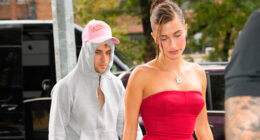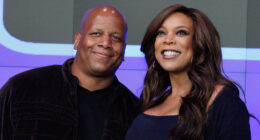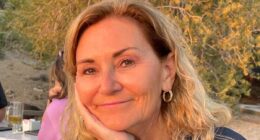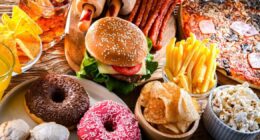When I struggled with breastfeeding, ancient images of motherhood helped me feel less isolated
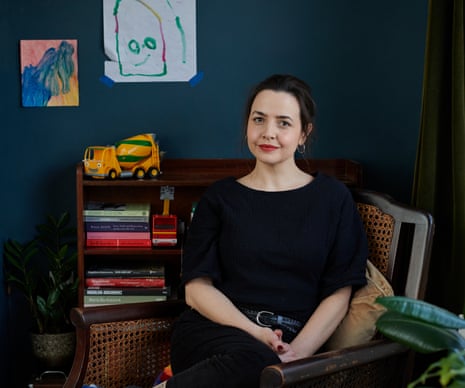
I felt like a failure because I found breastfeeding so painful but visual art helped me make sense of my experience
Mythical mothers, divine mothers and royal mothers. Ancient clay statuettes of pregnant women and contemporary explorations of birth. As an art historian of 20 years, I’ve seen a lot of representations of motherhood. And from Renoir’s wholesome portraits of his wife nursing their son to countless versions of the Madonna and Child, many of these images depicted blissful breastfeeding scenes. A few years ago, with my new baby asleep on my chest and unable to relax into sleep myself, I began obsessively searching for historical fragments of mothering lives – because I felt as if I was failing and needed something to tether myself to.
When I decided to get pregnant, I already knew I wanted to breastfeed. Other parents decide it’s not for them – a decision I respect now more than ever – but it was how I pictured my motherhood. I carried these idealised artistic representations of breastfeeding with me into antenatal classes, where I watched a woman hold a doll to a knitted boob and made notes on the best feeding positions. In these classes, we were never told about formula milk or preparing bottles or about how we might feel if our feeding hopes didn’t go as planned.
For the first days of my son’s life, just over four years ago, breastfeeding was as easy and brilliant as I had imagined. I forgot about the tiny amount of formula he’d been given at birth. About how, on the post-labour ward the following morning, a midwife told us formula is akin to feeding our newborns junk food. I forgot how jarring I found that comment, how it made me feel, as if, by letting my son have formula at birth, I’d already let him down.
After we got home, I went to every breastfeeding support group I was fortunate enough to have locally and took all the advice given by the kind experts there. But still, feeding was often painful and I’d bite down on my knuckles, wondering why I felt so unprepared for this. What was perhaps even more surprising was the depth of my desire to continue. My niggling concerns that something wasn’t right were dismissed by GPs. Then, at four weeks old, my son was briefly admitted to hospital due to losing too much weight.
Tests thankfully ruled out anything serious. The cause of his weight loss was “simply” too little milk. Overcome by guilt, I could blame only myself. We were sent home with instructions to buy formula, bottles and a breast pump and left to navigate bewildering and sometimes inconsistent advice. I was full of self-doubt, which seeped into the rest of my life, leaving me an unsure mother and broken wife. I spent hours expressing milk when I should have been sleeping and scrawled down equations to work out how much formula “top up” we needed. I meticulously logged feeding times, resulting in the kind of documentation I later found in Milk Report, by art duo Conway and Young, which calculates the economic value of the work of breastfeeding.
The anger I felt towards myself for “failing” to feed my baby properly was only matched by the newfound awe and appreciation I had for my body, which had grown and birthed a baby, and which continued to make one of the most incredible substances on earth. So, with the support of a loving partner and empathic family and friends, I steadfastly and determinedly continued.
Yet somehow focusing on the most vital task of my life made me feel small and inconsequential in the world. It was visual art that offered me solace in that tumultuous first year of new motherhood. Just looking at images helped me to make sense of my breastfeeding experience, providing pathways to reconnect to myself and helping me to understand why, at times, my breastfeeding body felt like a personal and societal battlefield.
Louise Bourgeois said that “an artist can show things that other people are terrified of expressing”. In those early days I returned to her again and again, finding poignant humour in her work. Red pregnant bodies bleed across the white page with astronaut babies floating within them. Globular multi-breasted figures captured the strange, ever-changing landscape of a birthing body.
READ RELATED: 6 Legit Ways to Support Your Immune System, According to Doctors
In her Good Mother sculpture of a nursing woman encased in a bell jar, I recognised the depth of love in the gaze between mother and baby. I also saw myself in the tired mother’s isolation. But, more than that, the glass jar finally made me see how much we are expected to mother in a detached world. A world in which motherhood as an ideal is exalted, while mothers themselves are too often sidelined, unsupported and filled with doubt.
This immediate, visceral response to art led me to other questions brewing in my sleep-deprived mind. What did mothers before me do? Why did wet nursing fall out of favour in western Europe? Why did I feel nervous when I first fed my baby in public, when our art galleries are full of images of breastfeeding? As I began what would become the initial research for my book, Milk, I learned that while breastfeeding defines us as mammals, beliefs around it change, influenced by social, political and religious factors. I started to understand just how confused and contradictory our culture is when it comes to breasts and breastfeeding.
Meanwhile, I continued to struggle, making weepy calls to the fantastic breastfeeding helpline and finding a chorus of solidarity and encouragement in mums’ groups and internet forums. Yet, when I went to the GP with a serious breastfeeding injury, she told me she had never heard of that happening before and suggested I switch to formula. I once again collapsed into shame that apparently my body was still doing it wrong.
It was only when I idly searched the archives of the Wellcome Collection and happened across Victorian nipple shields that I realised some women would have always needed to find ways to mitigate breastfeeding pain. As I looked at examples made from tin, glass or wood, I gave wry thanks for the slippery silicone shields I had previously so resented.
The more I looked, the more I felt myself being stitched into a larger history. I pored over different remedies offered to lactating women across the world, from cabbage leaves and seashells to jasmine flowers and spicy foods. I became entranced by a rare, 6th-century Indonesian bronze statue of a seated weaver who has paused her work at her loom to breastfeed, captivated by the detail of the baby tweaking a bare nipple while they fed. In the ancient Woman of Willendorf, I saw, for the first time, a postpartum woman in all her vulnerability and supreme power. I studied paintings depicting a startling moment in history when, during the late 18th century, it was more economically viable for Parisian parents to send their babies to wet nurses in the countryside while they worked in the city. I found Bronze Age infant bottles, unearthed at burial sites and which contain traces of animal milk. In the performance art of the MAMA project, Lynn Lu and Jess Dobkin, I revelled in the unapologetic investigations of motherhood, sexuality, labour and taboo. The intimacy between mother and child in paintings by the impressionist artist Mary Cassatt helped me realise that, when it came to my son, what mattered most was that he always felt held by my deep love for him. That our relationship was nurturing and nourishing in many other ways.
This sense of connection and understanding I found in history and art has continued to guide me through motherhood. Knowing that these parts of my identity are fully intertwined brings me comfort and confidence. It has made me a better parent and art historian. Though breastfeeding became much easier and we continued until my son was 18 months old, I now know where to look when navigating life’s other difficult times.
Two years after my son’s last feed, I stood in a London gallery, my eyes unexpectedly wet with tears as I looked at another Bourgeois sculpture. Encased in a large vitrine, on a cold steel plinth, knelt a small pink woman, her head slightly bowed. White threads from her nipples connected to five spools fanned out in front of her. I recalled the long nights when I felt desperately alone, realising my struggles were never mine alone. I had always been stitched into a vast and elaborate historical tapestry.
Milk: An Intimate History of Breastfeeding by Joanna Wolfarth (Weidenfeld & Nicolson) is out now at £18.99, or buy it for £16.52 at guardianbookshop.com. It’s also available as an ebook, £9.99, and audiobook, £21.99
Source: Health & wellbeing | The Guardian


